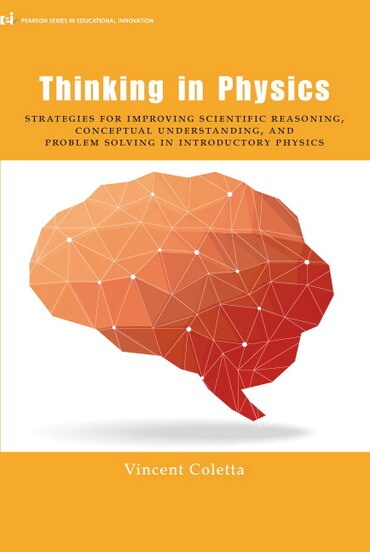
Thinking in Physics, 1st edition
Title overview
A fundamental approach to teaching scientific reasoning skills
In Thinking in Physics, Vincent Coletta creates a new curriculum that helps instructors reach students who have the greatest difficulty learning physics. The book presents evidence that students' reasoning ability is strongly related to their learning and describes ways for students to improve their reasoning to achieve a better understanding of basic physics principles.
- Created to reach students for whom interactive engagement is not enough.
- Presents evidence that students’ reasoning ability is strongly related to their learning. Coletta provides methods to help students improve their reasoning and achieve a better understanding of basic principles of physics.
- Chapters are designed around the research basis for TIP (Thinking in Physics). The first few chapters describe the motivation for TIP, its development, and evidence for its effectiveness. Subsequent chapters describe the pedagogy in detail and provide materials instructors can adapt to their course.
- Places an emphasis on the important role that gender plays in learning physics (chapter 3).
- Instructors in other STEM disciplines will find information broadly applicable to their classes.
Table of contents
I The Research Base for Thinking in Physics 1
1 The Development of Thinking in Physics 2
2 Evidence for the Effectiveness of Thinking in Physics 11
3 Gender Effects 17
II The TIP Curriculum 25
4 Student Population, Institutional Constraints, and the TIP Classroom26
5 Introducing Students to Thinking in Physics 29
6 TIP Course Structure 37
7 TIP at Chicago State University by Mel Sabella 47
III TIP Materials 51
8 Connecting the Dots 52
9 Reading Tests 56
10 Clicker Questions 71
11 Problem Solving Worksheets 118
12 Labs and Lab Concept Quizzes 122
13 Quizzes and Tests 185
Appendix 1: Lawson Classroom Test of Scientific Reasoning Ability 195
Appendix 2: A Guide to Learning Physics 203
Appendix 3: PowerPoint Slides for the First Week 211
Appendix 4: Syllabus and Schedule 217
Appendix 5: Seating Chart 221
References 222
Credits 223
Author bios
Vince Coletta earned his Ph.D. in theoretical physics from the University of Notre Dame, where his graduate research advisor was Gerald Jones, an academic descendent of Uhlenbeck and Boltzmann. For over 30 years he has been a Professor of Physics at Loyola Marymount University in Los Angeles, where he teaches introductory physics and courses in electromagnetic fields, quantum mechanics, and statistical mechanics. In this book Professor Coletta describes his Thinking in Physics curriculumand provides evidence for its effectiveness indeveloping students’ scientific reasoning skills, understanding of physics concepts, and problem solving skills.